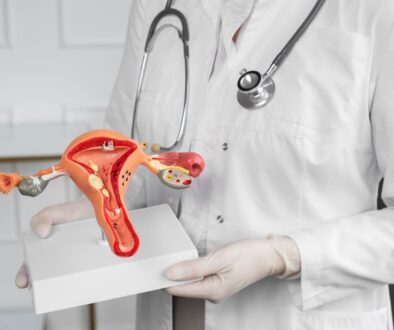Gynecological Surgery: Indications, Techniques, and Advances in Minimally Invasive Gynecology
Gynecological surgery is key to women’s medicine today. Gynecologic surgery is utilized to address benign conditions, reproductive problems, cancer, and problems of the pelvic floor. Historically, open surgery used to dominate, but today minimally invasive gynecologic surgery (MIGS) is highly emphasized. These methodologies—laparoscopy, hysteroscopy, and robotic surgery have revolutionized how doctors practice by reducing complications and yet being precise and effective.
For OB-GYNs and surgical gynecologists, it is essential to stay updated with the latest surgical indications, operative maneuvers, and the latest technology to improve patient results and practice evidence-based medicine.
Indications for Gynecological Surgery
Gynecologic surgery covers the breadth of human existence. The indications most frequent are:
- Benign gynecologic disease: management of leiomyomas, ovarian cysts, endometriosis, chronic pelvic pain, pelvic inflammatory sequelae, and abnormal uterine bleeding resistant to medical therapy.
- Oncology: treatment of cervical, ovarian, endometrial, and vulvar cancers through staging, resection, cytoreduction, and fertility-preserving oncologic procedures.
- Reproductive and fertility considerations: surgical correction of uterine anomalies, myomectomy, cystectomy, or tuboplasty to restore fertility. Permanent contraception via tubal ligation also falls under reproductive surgery.
- Pelvic floor disorders: prolapse repair, sacrocolpopexy, mid-urethral sling procedures, and other reconstructive interventions for incontinence and support defects.
- Obstetric and gynecologic emergencies: ectopic pregnancy, retained products of conception, and evacuation following failed pregnancy.
Moreover, this breadth of indications underscores the essential role of surgical training and sub specialization in gynecology.

Core Gynecological Surgical Procedures
Diagnostic and Therapeutic Procedures
- Colposcopy and Directed Biopsy – An essential diagnostic tool following abnormal cervical cytology, enabling biopsy under magnification.
- Cervical Cryotherapy – Widely used for ablating cervical intraepithelial neoplasia (CIN) and preventing progression to carcinoma.
- Dilation & Curettage (D&C) – A cornerstone procedure for endometrial sampling, evaluation of abnormal bleeding, and diagnosis of hyperplasia or carcinoma.
- Endometrial Ablation – Provides minimally invasive control of menorrhagia, often replacing hysterectomy in selected patients.
- Hysteroscopy – Enables direct intrauterine evaluation and simultaneous intervention, including polypectomy, adhesiolysis, removal of foreign bodies, and assessment of recurrent miscarriage.
Excisional and Reconstructive Procedures
- Loop Electrosurgical Excision Procedure (LEEP) – Excisional management of cervical dysplasia with simultaneous diagnostic and therapeutic value.
- Myomectomy – Fertility-preserving surgical excision of fibroids, performed via open, laparoscopic, or hysteroscopic approach.
- Hysterectomy – One of the most commonly performed procedures, indicated for benign conditions refractory to conservative management as well as malignancy. Routes include abdominal, vaginal, laparoscopic, and robotic.
- Pelvic Floor Reconstruction – Includes vaginal or abdominal repairs, sacrocolpopexy, and slings for prolapse and stress urinary incontinence.
- Tubal Ligation – Performed via laparoscopy or mini-laparotomy, offering definitive sterilization.
- Uterine Artery Embolization (UAE) – An interventional radiology technique increasingly utilized for symptomatic leiomyomas as an alternative to surgery.
Advances in Minimally Invasive Gynecology (MIGS)
Laparoscopic Gynecological Surgery
Laparoscopy is currently the preferred approach for most gynecologic surgical procedures because it provides improved visual images and less damage. Key applications include:
- Excision of endometriosis and pelvic adhesiolysis
- Myomectomy and hysterectomy
- Ovarian cystectomy or oophorectomy
- Management of ectopic pregnancy
- Tubal sterilization
- Oncologic staging and cytoreduction
Advantages of laparoscopy include reduced blood loss, shorter hospital stay, lower risk of wound complications, faster recovery, and improved cosmetic outcomes. The use of advanced energy devices and three-dimensional viewing has further improved the scope of laparoscopic gynecology.
Hysteroscopic Surgery
Hysteroscopy offers unparalleled access to intrauterine pathology with both diagnostic and therapeutic potential. Common indications include:
- Intrauterine adhesiolysis (Asherman’s syndrome)
- Endometrial polypectomy
- Submucosal fibroid resection
- IUD removal
- Investigation of recurrent pregnancy loss
Office hysteroscopy without the need for general anesthesia has made office procedures more streamlined and reduced hospital-based intervention.
Robotic-Assisted Gynecologic Surgery
Robotic surgery has emerged as a valuable adjunct in complex gynecologic procedures, particularly in oncology and reconstructive cases. It offers enhanced dexterity, improved ergonomics, tremor filtration, and superior three-dimensional visualization. Although more costly, robotic surgery has the potential to reduce the likelihood of converting to open surgery for challenging pelvic procedures.

Gynecologic Oncology Surgery
A distinct subspecialty, gynecologic oncology requires expertise in radical and cytoreductive procedures. Major surgery encompasses:
- Comprehensive surgical treatment involving removal of the uterus with pelvic lymphadenectomy in cases of cervical cancer
- Definitive surgical approach comprising hysterectomy with bilateral salpingo-oophorectomy and staging for endometrial carcinoma
- Cytoreductive surgery and interval debulking for advanced ovarian cancer
The trend toward minimally invasive staging, sentinel lymph node mapping, and minimally invasive fertility-preserving surgical procedures reflects an overall movement toward less-invasive but still-effective surgical procedures for treating cancer.
Conclusion
Gynecologic surgery is ever-evolving by matching the surgical efficiency and patient-centered outcomes. From essential diagnostic procedures such as colposcopy and hysteroscopy to advanced oncologic resections and reconstructive surgery, the field requires continuous adaptation to new technologies.
For practicing gynecologists and surgical subspecialists, minimally invasive techniques—including laparoscopy, hysteroscopy, and robotic-assisted surgery—are now central to evidence-based practice. Staying current with these advancements ensures not only improved clinical outcomes but also reduced morbidity, faster recovery, and enhanced quality of care for patients.














